We are not fans of organised tours, so when planning our recent trip to Vietnam we bucked the trend and chose to visit Sapa rather than the over-populated Halong Bay. What a fantastic decision that was, our Sapa experience being one of the highlights of our whole trip to Vietnam.
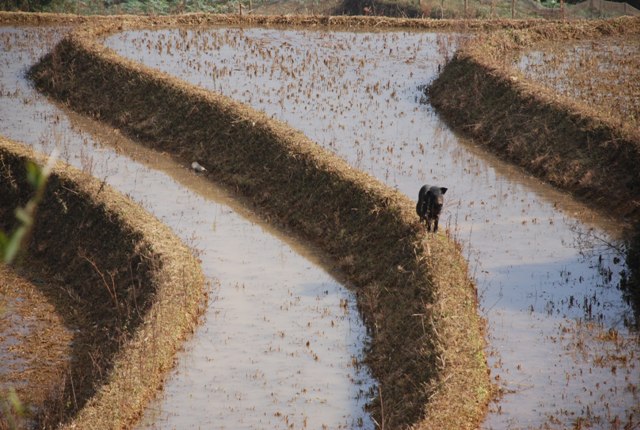
.
Sapa is a town in the mountains of North Vietnam, and is believed to have been populated since the 15th Century. It was used as a cool summer holiday destination by the French in the early 1900’s and is now a popular spot for both Vietnamese and international tourists.
The Hoàng Liên Son Mountains dominate the landscape of Sapa and they are the eastern most edge of the Himalayas. The range contains Mt Fan Si Pan which is Vietnam’s highest mountain, at 3143m above sea level, making the area very popular amongst hikers.
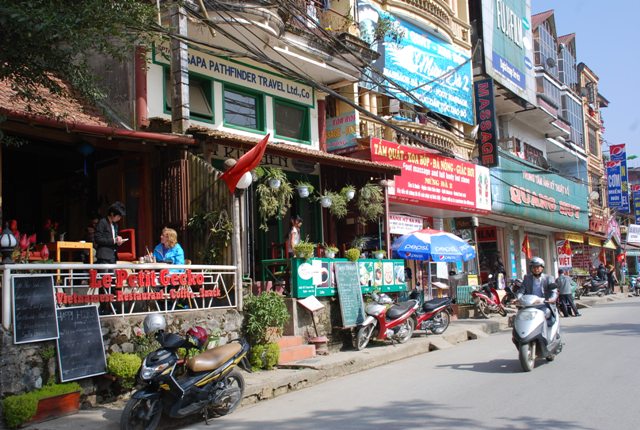
Getting to Sapa
You can travel to Sapa from Hanoi by overnight train. We booked our tickets through our very helpful hotel in Hanoi, the Meracus Hotel 1. For USD$5 extra per person they even took us to the Hanoi train station and all the way to our train carriage, which ended up being very helpful as there aren’t too many English speaking staff at the station and signage and directions were definitely lacking.
The cost was USD$45 per person each way for a sleeper cabin. After some preliminary online research we had found that even though it looks like there are lots of different trains to choose from, different companies are actually only selling seats in different carriages which all end up being on the same train. For some good information see www.vietnam-railway.com/train/touristtrainstosapa.
We also took some fellow traveller advice and booked the whole cabin (4 berths). It was a bit pricey but we preferred the privacy of having a cabin to ourselves and had a reasonable night’s sleep. Our particular carriage provided a bottle of water per berth, but if you want some nibbles for the journey you can take your own. The shared carriage toilets weren’t as bad as I had expected either (bonus!).
Our train trip left Hanoi at 9pm and arrived in Lao Cai at about 5.30am. The whole trip was in the dark, which is a shame as it would have been a great opportunity to see the northern Vietnam countryside, but the overnight train is certainly a time-efficient way to travel.
Hot tip!
Make sure you organise a transfer to the hotel from the train station when you book your accommodation in Sapa. There are dozens of mini buses waiting at the station ready to take the train travellers up to Sapa, but if you haven’t prearranged your journey you will be at the mercy of the ‘price of the day’.
The 38km mini bus journey takes you steadily up the steep valley sides and as the sun rises the spectacular views appear as you rise above the mist.
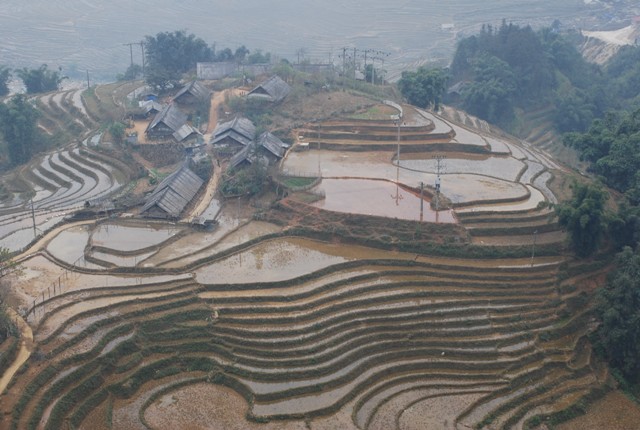
The best time to visit Sapa
The temperature definitely drops from Hanoi to Sapa, so be prepared with a few layers (or do a trip to one of the many North Face stores when you get there for a bargain).
It was low 20’s (celcius) in Hanoi in early January and it was lucky to reach 10 degrees celcius during the day in Sapa while we were there. It had snowed a few weeks earlier! June to August is summer in Sapa where the temperatures reach the mid twenty degrees celcius on average.
The best time to see the green rice paddy fields is June to early August, which is the rainy season. We visited in early January and the paddies were brown and muddy as the rice had been harvested, but they were still a spectacular site. Harvesting generally occurs through September and October.
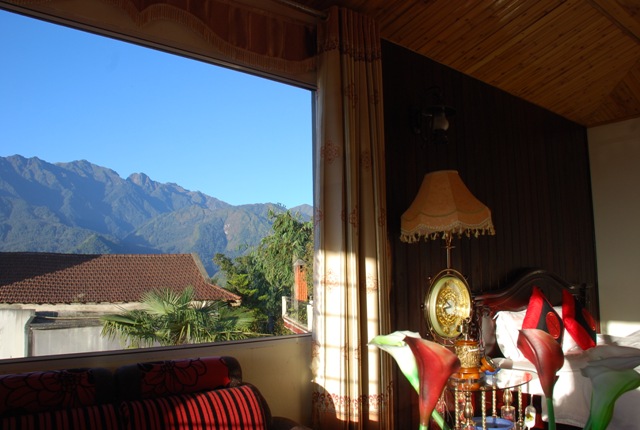
Accommodation in Sapa
Sapa is a stunning village with dozens of hotels nestled on the sides of the steep hills to take advantage of the views. There are plenty of choices, with cafes and restaurants in walking distance, and not too much traditional street-side dining, probably due to the cooler climate, and domination of tourist taste buds.
We arrived from the train prior to check-in time and our USD$35 room wasn’t available so we were offered an upgrade to a VIP room for an extra USD$20 – we were cold so we took it! The room was spectacular, with stunning mountain views, and the hot shower and heater were very much appreciated and more than worth the extra $20.
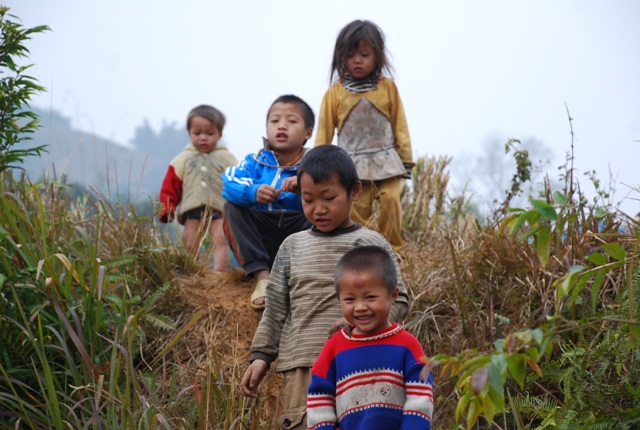
Exploring Sapa
Scooter hire is USD$5 a day, complete with a dodgy helmet each, so off we went. The traffic is very light in Sapa compared to the busy streets of Saigon and Hanoi, so Sapa was a breeze.
We took off exploring the local streets, and happened to witness the slaughter of a water buffalo surrounded by a crowd of local onlookers. Nothing is wasted in Vietnam so every part of the water buffalo would have been used for food or made into goods to sell.
We headed out of town on a road which took us high above Sapa, with tight winding roads, dropping down into the valleys below. This road has been listed as one of the best motorcycle journeys in the world and the view at the top of the Tram Ton Pass was simply stunning. We stopped and got off the scooter, jaws dropping at the spectacular view below us.

Sapa hill tribe villages
One of the most popular activities is a long walk down from Sapa into the valley, past stunning rice paddies carved into the mountain sides, and through several local hill tribe villages.
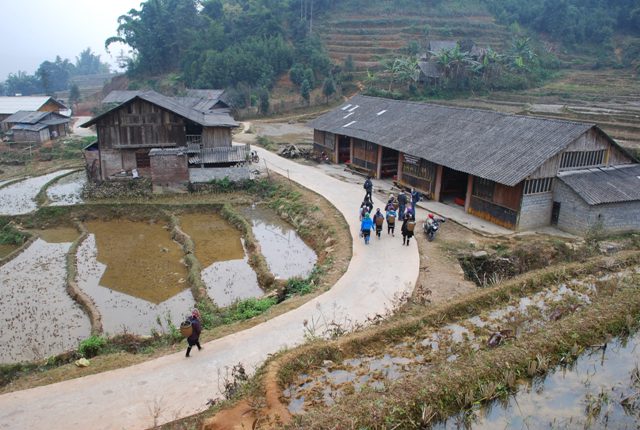
We had decided not to do the walking tour but do more exploring on the scooter. By sheer accident we found the road leading down to the villages (much to the seeming distaste of the walkers that we scootered past, who realised we might have chosen the better option!).
Some of the tracks weren’t for the faint hearted and not specifically designed for scooters, but they provided for an adventure packed thrill ride as we ventured down into the valleys below and then through the villages, stopping for coffee, talking to locals and being touted for purchases.
Tourists are their main form of income and the H’Mong women sure know how to engage (sometimes very cheekily) with you in English! We had some fabulous laughs from our exchanges!

So for something a little different in Vietnam, we highly recommend Sapa. Explore and mix it with the locals and you’ll have a rewarding taste of the cultural feast that is Vietnam.
Want More Travel in Asia?
- Things to do in Ho Chi Minh City
- 5 things to do in Sandakan, Borneo
- Scuba Diving Adventures in Sipidan
- Girls’ Weekend in Marrakech - June 17, 2014
- Discover Sapa, North Vietnam - May 28, 2014
- Things to do in Ho Chi Minh City - March 21, 2014